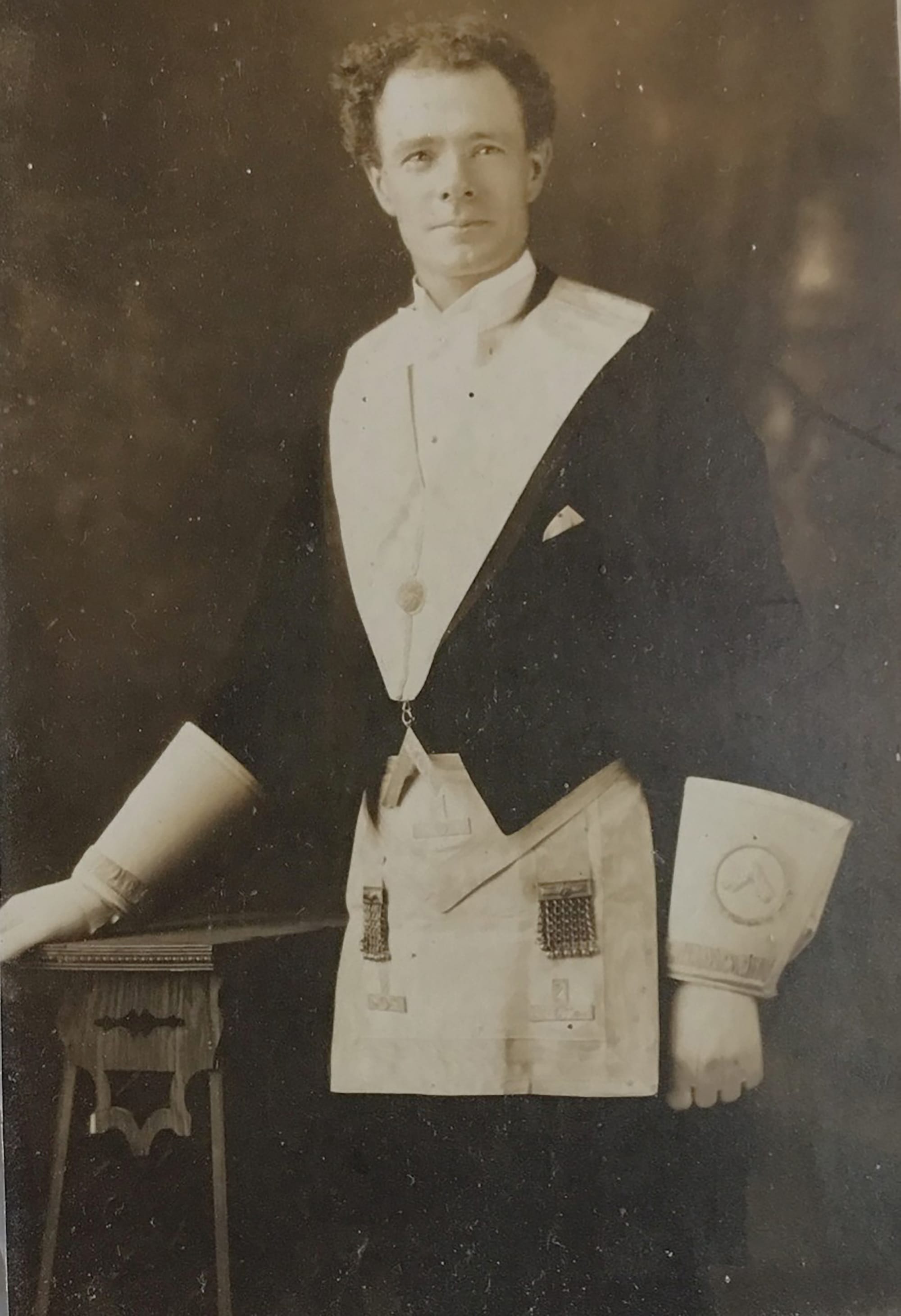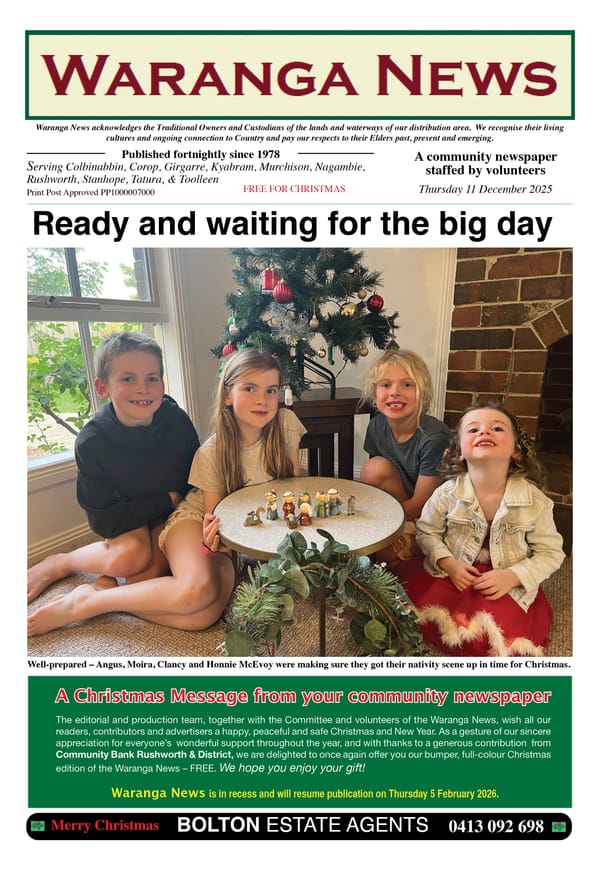A Rushworth Invention

In a town where the timber industry was important for many years, it is perhaps unsurprising that locals invented things that had a connection to the industry. One such invention was devised by Eric Ollov Risstrom Junior of Rushworth.
Eric was the son of Eric Ollov Risstrom Snr, who was born in Sweden, and Mary Ann (nee Davidson), who was born in Ireland, and was one of nine children. His father came to Australia in 1859. Eric Jnr was born in Steiglitz, an old gold mining town west of Melbourne, in 1870. He married Margaret (“Maggie”) Taylor in 1894 and they, in turn, had ten children, all born in Rushworth.
Eric Jnr worked at Walbran’s store, before opening his own store, known as The Block Emporium in High Street. He advertised that business in the local paper for three years from 1903-5, then as The Furniture Arcade and Emporium (usually known simply as “The Arcade”), on the corner of High Street and Moora Road, until 1914 when he moved to Melbourne.1 He did not work in the Rushworth forest but would have had regular contact with many men who did. Their ideas may have helped Eric to shape the final product covered by his patent.

Patent application
In 1902, Eric Risstrom Jnr applied for a patent for his invention, which was approved as Patent No 19047, “improvements in show stands for axes and the like.”2 The Rushworth museum contains an example of the invention, as well as a scale model built by Eric to show how his invention would look and work. Eric Snr was a carpenter and had clearly passed some of his skills on to his son.
The rotating stand was not really intended for private use. It was more a way for retailers to display a range of axes in their retail outlets without taking up too much space. The design was such that the axes faced inwards to protect the blades. In the application, Eric stated that “as is well known axes are of different patterns and different weights, and it is a trade custom to brand the weights on the back of the axe head or near thereto at the back of the handle.” Customers could see the weight of each axe as they turned the revolving axe stand around.
One version of the stand had two tiers which could each hold 24 axes. Each axe-head had its own separate compartment. The handles of the axes on the top tier pointed upwards; those on the bottom tier downwards. The central pillar could be free-standing or bracketed to a wall.
Eric continued to pay the fees to renew the patent until at least 1909, so hopefully the sales were providing him with some regular income.

Move to Melbourne
While many of the Risstrom family stayed in the local area, Eric and his family moved to Northcote in Melbourne in 1914 after the failure of his business. This was a major loss to Rushworth, as Eric had been very active in community organisations such as the Mechanics Institute, the fire brigade, Empire Day committee and the rifle club.
The iconic store, which still stands on the corner of Moora Road and High Street, was taken over by Daniel Wilson. In Melbourne, Eric pursued a career as a carpenter and joiner, specialising in making church furniture.
Both in Rushworth and Northcote, the Risstroms were closely connected to the Methodist church. Eric was a lay preacher for 50 years. When he was in Melbourne, he served for a time as the President of the Rushworth Old Boys and Old Girls Association. He regularly visited patients at the Alfred Hospital, where he was known as “the man with the harp”.3
Many members of the Risstrom family remained in Rushworth and district. Eric’s brother George ran a well-known sawmilling business and was president of the Rushworth Football Club during its glory years in the 1930s and again after World War 2. He was succeeded in the business by his son Ron, and he in turn by his son Wes.
The Risstroms had a forge at their mill where they made a lot of their own tools. Perhaps this inventiveness had its origins in the trade skills of Eric Risstrom Snr, and the intellect and design skills of his son that are clearly demonstrated in his patent application.
References: 1 Bons, Tracy, Rushworth Businesses and Their Owners Vol 1 pp 96-7; 2 National Archives of Australia, Item A131149, 19047; 3 The Herald (Melbourne) 6.3.1945.




